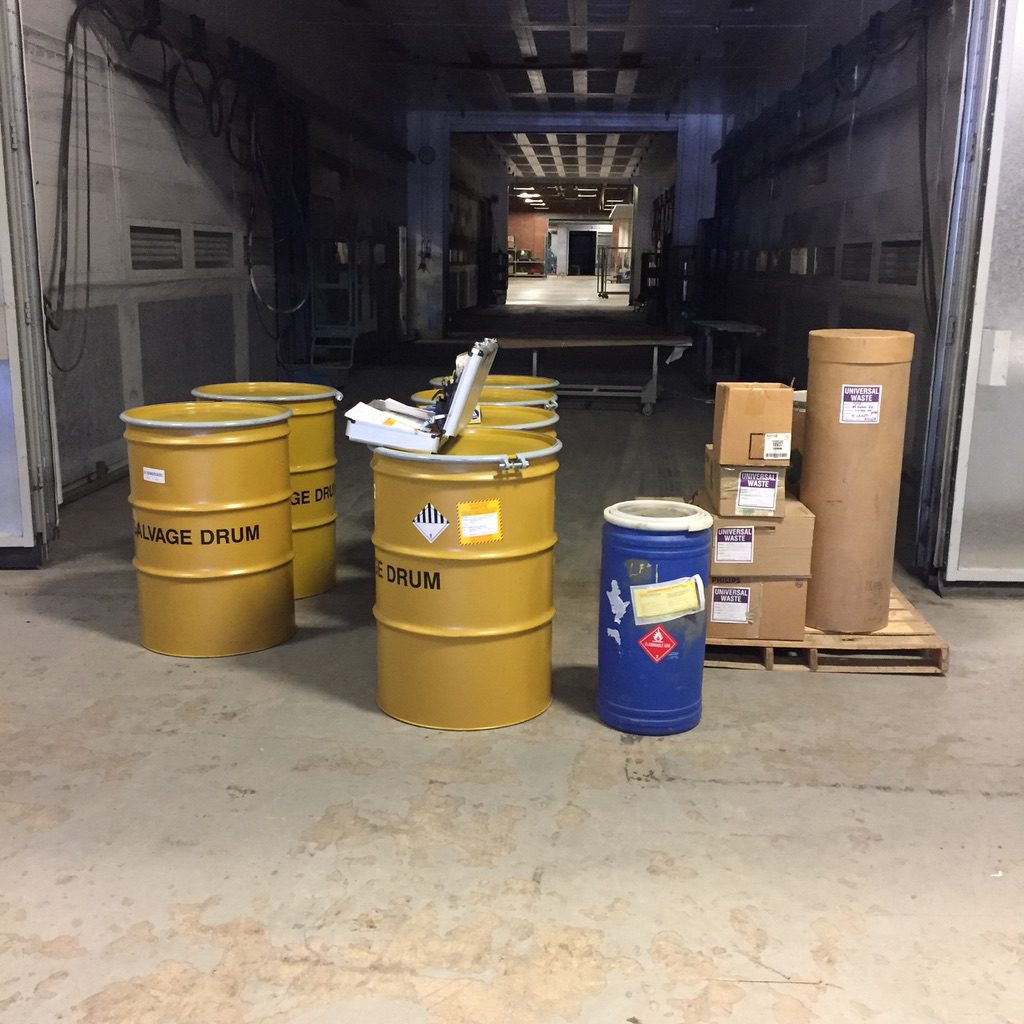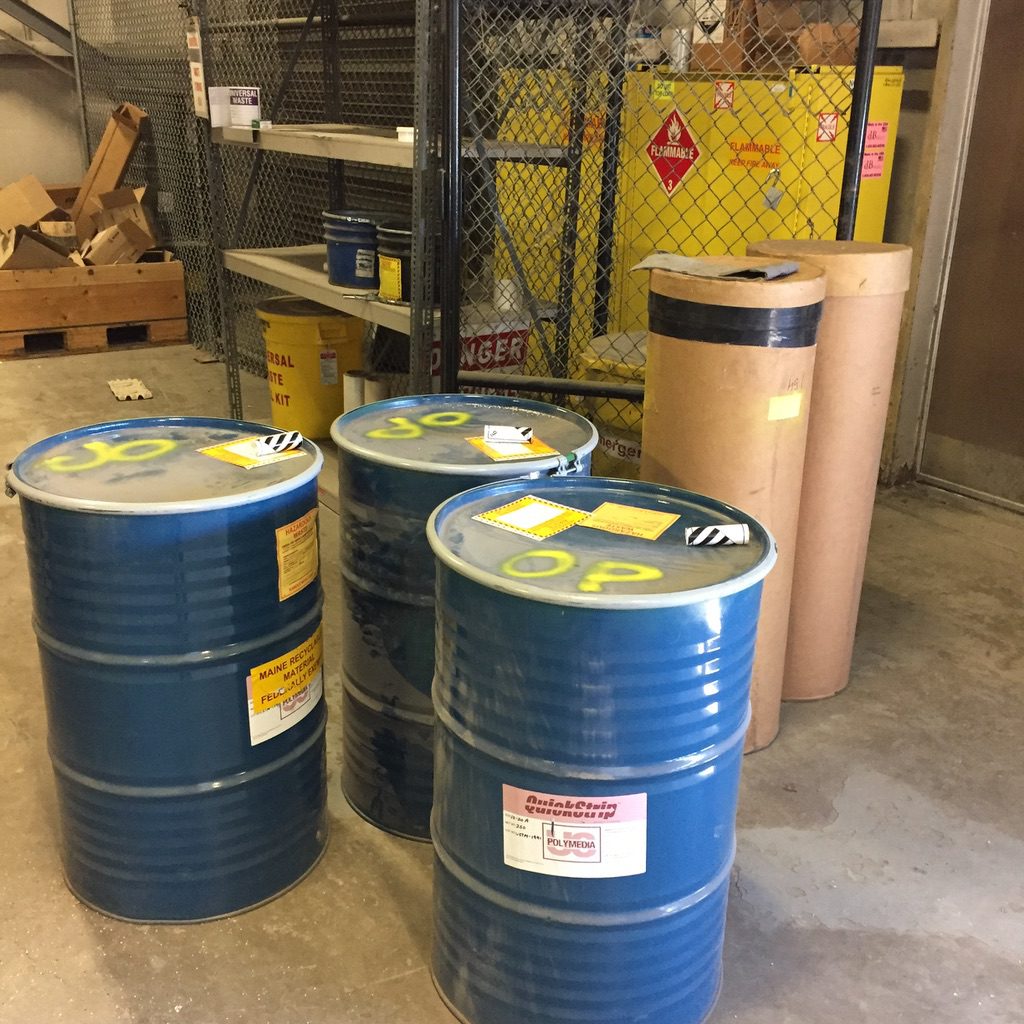
Storing waste materials incorrectly can be dangerous, even fatal, with the potential of causing leaks, fires, or environmental contamination. To protect the environment while continuing to encourage recycling hazardous waste, EPA has developed regulations for hazardous waste storage area design.
Here are some requirements to keep in mind for storing hazardous waste.
Quantity and Time Limits
A generator’s categorization and regulations are determined by the volume of hazardous waste they generate each month. There are limitations on how much waste can be stored in a facility at any given time and, if the amount goes over the limit, a generator will get bumped into a higher category. Ultimately, the goal is to take steps to reduce or minimize waste altogether.
Length of on-site storage time is another factor to consider. You’ll want to check on any time limits based on the size of your generator and state-specific regulations. Generally speaking, all waste must be disposed of within 6 months of accumulation to decrease safety risks.
Maintain Spills and Leaks
There should be no visible signs of spillage or contamination, whether the waste is being stored on the floor or in a cabinet. This applies to both storage containers and secondary storage containers.
Containers must be capped at all times to prevent spills or evaporation, which is not a legal means of disposal. You must immediately clean up any spilled materials in waste storage areas, but keep in mind that liquid and solid hazardous waste can not be poured down the drain or put in the trash.
Secondary Containment Storage
Check that hazardous waste containers holding liquids are stored properly in secondary containment. In the event of container breakage, trays must be able to hold all liquid waste released. Clean or wipe down secondary containers as needed.
Segregate Incompatible Wastes
Organize and separate wastes based on hazard class (flammable, oxidizer, etc.). There are various guides you can reference to determine hazard class. Incompatible wastes should be stored in different secondary containers to avoid possible accidents or contamination.
Safe, Accessible Container Storage

The general rule is that you must be able to easily see and access hazardous waste containers to effectively perform routine inspections or clean up any spills that may occur. You shouldn’t have to move any other objects, such as secondary trays, to be able to access containers.
That said, while containers should be accessible, don’t store them in high-traffic areas where they could be susceptible to breakage. Keep containers in a secure, supervised work area where they can be monitored.
Properly Seal Waste Containers
To prevent the possibility of leakage, check all container lids carefully to ensure a snug fit. Waste containers should generally be closed at all times other than when waste is being added – they should never be left open unsupervised or overnight.
Accurate, Detailed Labeling
Ensure ALL waste containers are accurately labeled and dated as soon as waste accumulation begins. Labeling should include the type of waste, its hazard class, and any other prevalent details that may be needed. Failure to properly label hazardous waste containers is one of the most commonly cited violations for material storage.
Personnel Safety Training
It’s required that all individuals working with and around hazardous waste materials are accurately trained in the disposal, handling, and documentation of waste. Lack of proper training can lead to accidents or contamination.
Contact the Hazardous Waste Professionals
At MLI Environmental, we realize that the possibility of contamination due to an improper hazardous waste storage area design could mean your job. Luckily, we offer personalized solutions for waste management to help you ensure all requirements are fulfilled. Large or small, we have shipping and disposal options for your hazardous materials.
Contact us today to learn about our waste management services!
